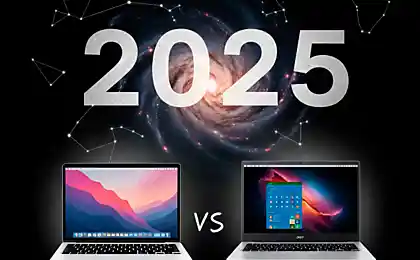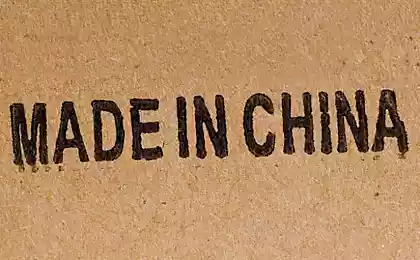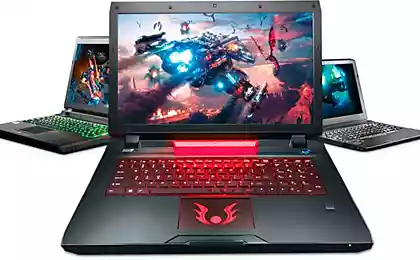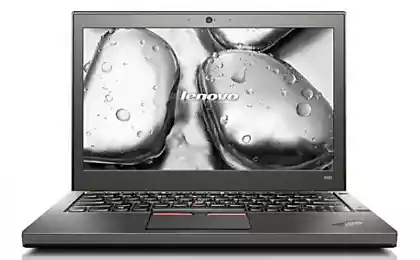527
What makes the laptop and why?
Many pay attention to that from which the body is made of an electronic device. This is both good and bad. Well, because the material is really strong influence not only on the subjective perception of design, but also on many characteristics. Poor, because few imagine the real situation. And manufacturers to easily slip the buyer that looks good, but not necessarily successfully in practical terms
The perception of a material such as expensive and right depends on psychology. There are two points. Firstly, interesting looks that seem new or new. Indeed, it is rare that - if it is short. More detailed: Now, during an unprecedented development of the chemical industry and the total domination of synthetics, interest itself shifted to natural materials. Wood, metal, natural fabrics, or at least a clever imitation of us more than anything that looks like a plastic.
No really expensive materials in laptops do not use. And thank Santa!
I do not think that it has always been. Our grandparents in their time much more appreciated just synthetics. New materials were unusual and looked at the time of the cosmos. And rightly associated with the progress (in fact it was the most that either there is progress). Therefore, people liked them, buyers preferred synthetic hemp-native wood, metal and pure wool with homespun linen.

Appliances Braun at the end of the 50s have become the standard of successful design. Imagine yourself at that time and imagine how unearthly look of these devices. In many respects it is a merit of plastic
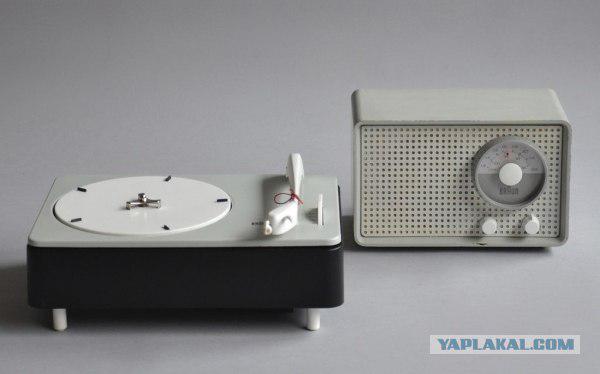
Classic design for the time the TV Philco. Interestingly, the company Philco also tried his hand at creating a futuristic design - but we know it is only on the game Fallout, as one of the clearest examples of retro-futurism
Posted in [mergetime] 1349870366 [/ mergetime]
Now the pendulum is in the opposite position. Plastic seems to us something purely utilitarian and bored, no novelty in it are long gone. Wherever you look - everywhere it. Bored, I want something else. Because we love so much metal that our grandparents did not stir. Well zolotishko something they liked, of course - but not the same iron Lumino.
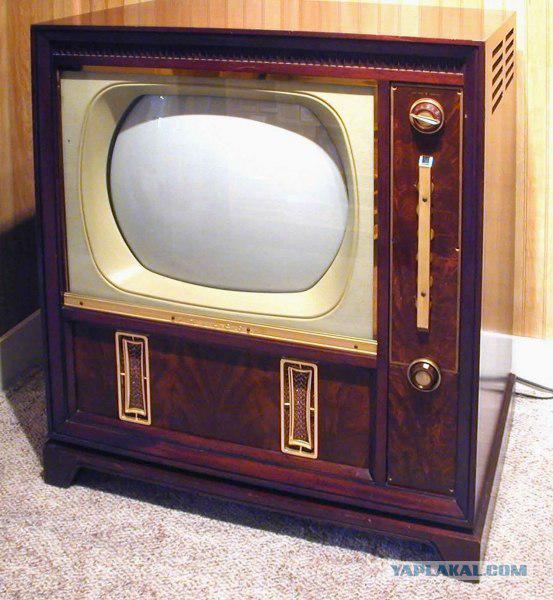
SovietSpoon Pro Unibody, classical model. Some lucky and now given the opportunity to use this netlenkoy
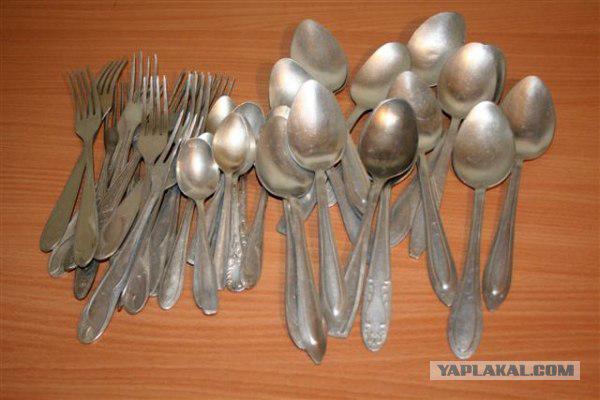
The second point, which can be briefly described as "heard a bell, but do not know where he is." In consumer products manufacturers have long and firmly switched to synthetics. But in professional equipment they are still often used metal. Do not anyhow any metal - but who's there to understand.
Below - one of the first laptops, GRiD Compass: developed in 1979, the body is made of magnesium alloy, the weight of 5 kilograms - at the time a fantastically easy. In the early 80s the laptop flew into space, but what made your MacBook?
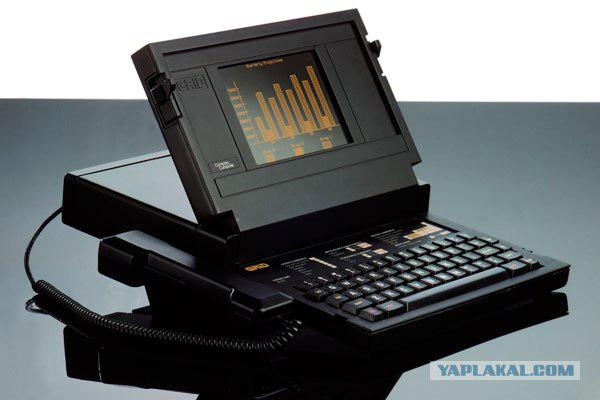
From this confrontation pairs signs "cheap plastic" and "expensive metal" was born and partly informed perception of domestic materials in the field of the economy. The same thing happened in some neighboring areas.
At some point, manufacturers have realized this, and at a new stage of progress melkotravchatomu vengeance began to use new prejudices buyers, exposing the metal on display, even in those cases where the design of its actually not. But let's not get ahead of ourselves and tell you everything in order - it's time to finish with historical information and go directly to the entertaining materials science.
Below - Dell XPS 13 - the wide range of materials in a single laptop
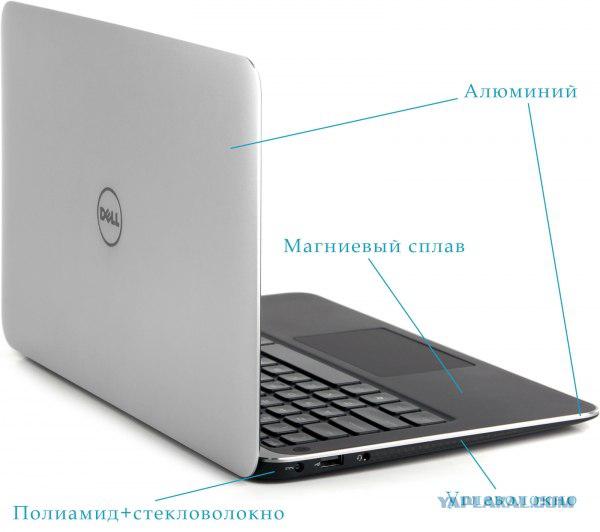
The base material for the majority of today's notebook is a mixture of two synthetic materials: ABS and polycarbonate. Shorten: ABS + PC or ABS / PC, can be reversed. The first component, ABS, polycarbonate, about half the price, but in a pure form it has some disadvantages, for correction which is added to the mixture and the second component.
A mixture of ABS + PC comes in the form of pellets tatty
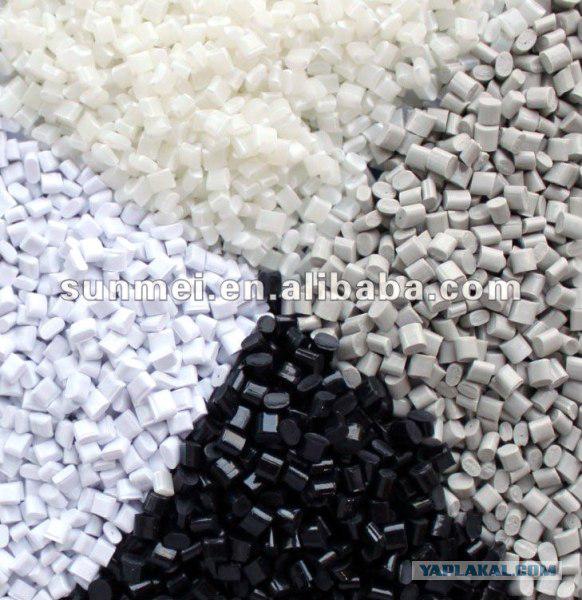
Source:
The perception of a material such as expensive and right depends on psychology. There are two points. Firstly, interesting looks that seem new or new. Indeed, it is rare that - if it is short. More detailed: Now, during an unprecedented development of the chemical industry and the total domination of synthetics, interest itself shifted to natural materials. Wood, metal, natural fabrics, or at least a clever imitation of us more than anything that looks like a plastic.
No really expensive materials in laptops do not use. And thank Santa!
I do not think that it has always been. Our grandparents in their time much more appreciated just synthetics. New materials were unusual and looked at the time of the cosmos. And rightly associated with the progress (in fact it was the most that either there is progress). Therefore, people liked them, buyers preferred synthetic hemp-native wood, metal and pure wool with homespun linen.

Appliances Braun at the end of the 50s have become the standard of successful design. Imagine yourself at that time and imagine how unearthly look of these devices. In many respects it is a merit of plastic

Classic design for the time the TV Philco. Interestingly, the company Philco also tried his hand at creating a futuristic design - but we know it is only on the game Fallout, as one of the clearest examples of retro-futurism
Posted in [mergetime] 1349870366 [/ mergetime]
Now the pendulum is in the opposite position. Plastic seems to us something purely utilitarian and bored, no novelty in it are long gone. Wherever you look - everywhere it. Bored, I want something else. Because we love so much metal that our grandparents did not stir. Well zolotishko something they liked, of course - but not the same iron Lumino.

SovietSpoon Pro Unibody, classical model. Some lucky and now given the opportunity to use this netlenkoy

The second point, which can be briefly described as "heard a bell, but do not know where he is." In consumer products manufacturers have long and firmly switched to synthetics. But in professional equipment they are still often used metal. Do not anyhow any metal - but who's there to understand.
Below - one of the first laptops, GRiD Compass: developed in 1979, the body is made of magnesium alloy, the weight of 5 kilograms - at the time a fantastically easy. In the early 80s the laptop flew into space, but what made your MacBook?

From this confrontation pairs signs "cheap plastic" and "expensive metal" was born and partly informed perception of domestic materials in the field of the economy. The same thing happened in some neighboring areas.
At some point, manufacturers have realized this, and at a new stage of progress melkotravchatomu vengeance began to use new prejudices buyers, exposing the metal on display, even in those cases where the design of its actually not. But let's not get ahead of ourselves and tell you everything in order - it's time to finish with historical information and go directly to the entertaining materials science.
Below - Dell XPS 13 - the wide range of materials in a single laptop

The base material for the majority of today's notebook is a mixture of two synthetic materials: ABS and polycarbonate. Shorten: ABS + PC or ABS / PC, can be reversed. The first component, ABS, polycarbonate, about half the price, but in a pure form it has some disadvantages, for correction which is added to the mixture and the second component.
A mixture of ABS + PC comes in the form of pellets tatty

Source:
